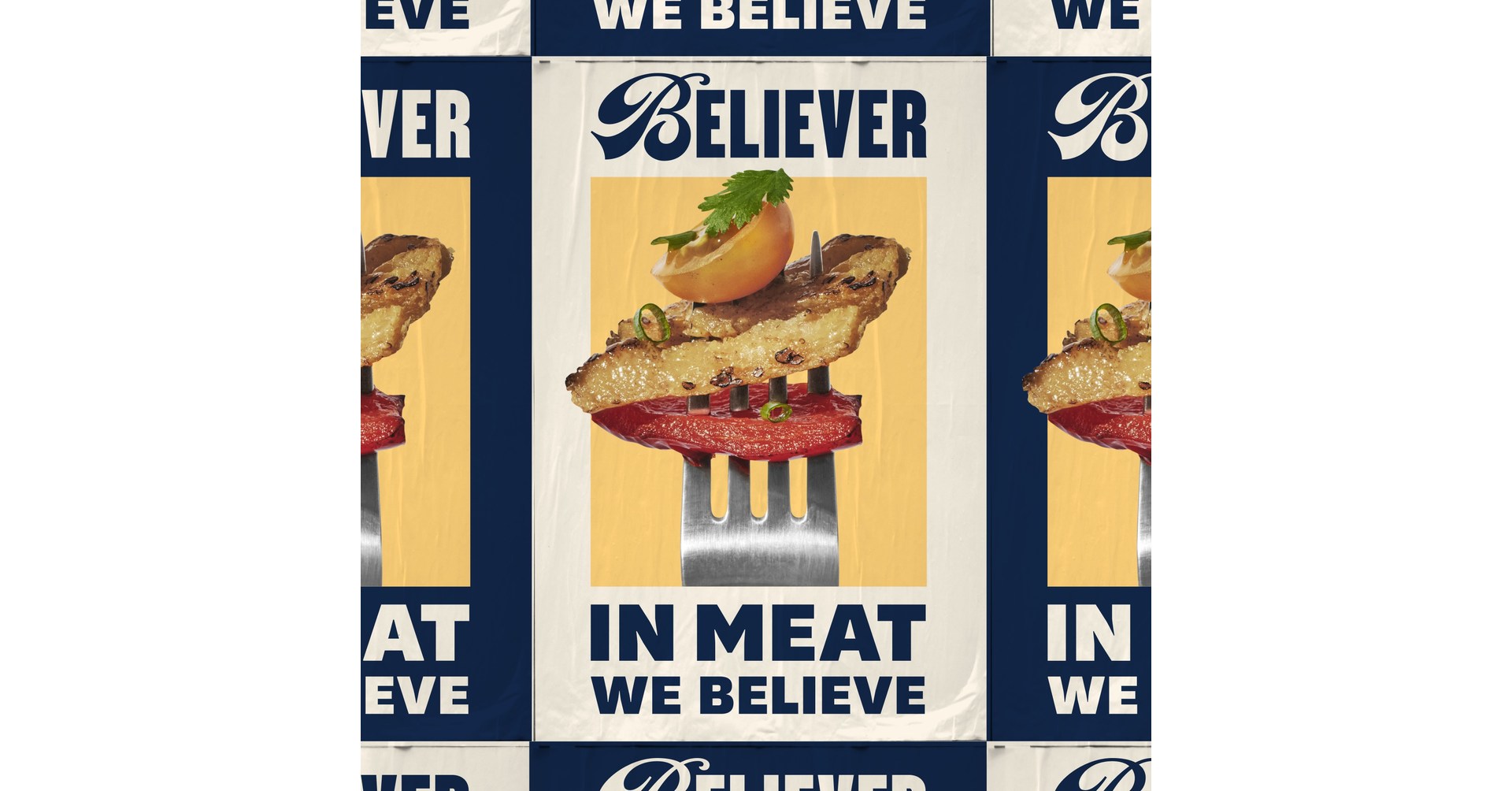Believer Brand: The Ultimate Guide To Building A Community-Driven Empire
Hey there, fellow dreamer! Welcome to the world of believer brands, where passion meets purpose and turns into pure magic. Imagine this: a business that’s not just about selling products but about creating a movement. A brand that resonates with people on a deeper level, making them feel like they’re part of something bigger. That’s what a believer brand is all about. It’s more than just marketing—it’s building a loyal community that stands by you through thick and thin.
Now, let’s get real for a second. Building a believer brand isn’t easy. It takes time, effort, and a whole lot of heart. But trust me, it’s worth it. When you create a brand that people believe in, you’re not just selling stuff—you’re creating experiences, memories, and connections. In today’s crowded marketplace, standing out isn’t just an option; it’s a necessity. And believer brands do just that.
So, buckle up, because we’re diving deep into the world of believer brands. From understanding what they are to learning how to build one, this article’s got you covered. Whether you’re a startup founder or a seasoned entrepreneur, there’s something here for everyone. Let’s get started, shall we?
Read also:Corruna Kopf Naked Unveiling The Truth Behind The Controversy
What Exactly is a Believer Brand?
A believer brand is more than just a logo or a slogan. It’s a movement that inspires people to take action. Think of brands like Apple, Nike, or Patagonia. These aren’t just companies—they’re communities. People don’t just buy their products; they buy into their vision. That’s the power of a believer brand.
At its core, a believer brand is built on trust, authenticity, and shared values. It’s about creating a connection with your audience that goes beyond transactions. It’s about making them feel like they’re part of something meaningful. And let’s be honest, who doesn’t want that?
Key Characteristics of a Believer Brand
- Authenticity: Believer brands are real. They don’t fake it till they make it; they live and breathe their values.
- Community: These brands aren’t just about selling stuff; they’re about building a community of like-minded individuals.
- Passion: Believer brands are fueled by passion. They’re not afraid to stand for something and take a stance.
- Transparency: Honesty is key. Believer brands don’t hide behind smoke and mirrors; they’re open about their processes and values.
So, how do you create a brand that resonates with people on such a deep level? Let’s break it down.
Why Are Believer Brands So Important in Today’s Market?
In a world where consumers are bombarded with ads every single day, standing out has never been more crucial. People are tired of being sold to. They want authenticity. They want brands that care about more than just profit. And that’s where believer brands come in.
Believer brands tap into the emotional side of consumer behavior. They speak to people’s hearts, not just their wallets. They create a sense of belonging, which is something that’s hard to come by in today’s fast-paced world. And when people feel like they belong, they’re more likely to stick around.
The Rise of Consumer Empowerment
Consumers today have more power than ever before. With access to information at their fingertips, they can make informed decisions about what they buy and who they support. They’re not just looking for quality products; they’re looking for brands that align with their values.
Read also:Casa De Carne Mendonccedila The Ultimate Meat Lovers Paradise Yoursquove Been Dreaming Of
This shift in consumer behavior has made it essential for businesses to focus on building genuine connections. It’s no longer enough to have a great product. You need to have a great story, a great mission, and a great community to back it up.
How to Build a Believer Brand
Building a believer brand isn’t something you can do overnight. It takes time, effort, and a lot of soul-searching. But if you’re willing to put in the work, the rewards can be incredible. Here’s how you can get started:
Step 1: Define Your Purpose
Every great believer brand starts with a clear purpose. Why does your brand exist? What problem are you solving? What change do you want to see in the world? These are the questions you need to answer before anything else.
Your purpose should be something that resonates with your audience. It should be something they can believe in and rally behind. For example, Patagonia’s purpose is to protect the planet. That’s something that resonates deeply with environmentally-conscious consumers.
Step 2: Know Your Audience
Understanding your audience is crucial. Who are they? What do they care about? What motivates them? The more you know about your audience, the better you can tailor your message to resonate with them.
One way to get to know your audience is by engaging with them directly. Ask for feedback, conduct surveys, and listen to what they have to say. Building a believer brand is a two-way street; it’s about creating a dialogue, not a monologue.
Step 3: Tell Your Story
Stories are powerful. They help people connect with your brand on an emotional level. Your brand story should be authentic, relatable, and inspiring. It should give people a reason to care about what you’re doing.
For example, TOMS Shoes’ story is all about giving back. For every pair of shoes sold, they donate a pair to someone in need. That’s a story that resonates with people who care about making a difference.
The Role of Transparency in Building Trust
Trust is the foundation of any believer brand. Without it, you won’t be able to build the kind of loyal community you’re aiming for. And the key to building trust is transparency.
Transparency means being open about your processes, your values, and your goals. It means admitting when you make mistakes and showing how you’re working to fix them. It means being honest about where your products come from and how they’re made.
Case Study: Warby Parker
Warby Parker is a great example of a brand that’s built trust through transparency. They’re open about their supply chain, their pricing, and their commitment to sustainability. They even have a section on their website dedicated to answering tough questions about their business practices.
By being transparent, Warby Parker has built a loyal customer base that trusts them to do the right thing. And that’s the kind of trust every believer brand should strive for.
Creating a Community Around Your Brand
A believer brand isn’t just about selling products; it’s about building a community. A community that shares your values, your vision, and your passion. But how do you create a community from scratch?
Step 1: Start with Your Core Fans
Every great community starts with a small group of dedicated fans. These are the people who believe in your brand the most. They’re the ones who will spread the word and bring in new members. Focus on nurturing these relationships first.
Step 2: Create Opportunities for Engagement
Engagement is key to building a strong community. You need to give people opportunities to interact with your brand and with each other. This could be through social media, events, or even online forums.
For example, Airbnb has created a thriving community of hosts and travelers through their online platform. They encourage users to share stories, tips, and experiences, which helps build a sense of connection and belonging.
The Importance of Staying True to Your Values
As your brand grows, it can be tempting to compromise your values for the sake of profit. But if you want to build a true believer brand, staying true to your values is essential. Your values are what make your brand unique and what attract people to it in the first place.
Case Study: Ben & Jerry’s
Ben & Jerry’s is a great example of a brand that’s stayed true to its values. From their commitment to using fair trade ingredients to their activism on social justice issues, they’ve always stood by their principles. And their customers love them for it.
By staying true to their values, Ben & Jerry’s has built a loyal following that trusts them to do the right thing. And that’s the kind of loyalty every believer brand should aim for.
Measuring the Success of Your Believer Brand
Building a believer brand is a journey, not a destination. But how do you know if you’re on the right track? Here are a few metrics you can use to measure the success of your believer brand:
- Customer Loyalty: Are your customers sticking around? Are they coming back for more? Loyal customers are a sign that you’re doing something right.
- Community Engagement: How active is your community? Are people engaging with your brand on social media, attending your events, or participating in your forums?
- Brand Advocacy: Are your customers advocating for your brand? Are they telling their friends and family about you? Word-of-mouth is one of the most powerful forms of marketing.
Remember, building a believer brand is about more than just numbers. It’s about creating meaningful connections and making a difference in people’s lives.
Overcoming Challenges in Building a Believer Brand
Of course, building a believer brand isn’t without its challenges. There will be setbacks, doubts, and moments of uncertainty. But every great brand has faced these challenges and come out stronger on the other side.
Challenge 1: Standing Out in a Crowded Marketplace
With so many brands vying for attention, standing out can be tough. But the key is to focus on what makes you unique. What’s your special sauce? What sets you apart from the competition?
Challenge 2: Maintaining Authenticity
As your brand grows, it can be tempting to water down your message to appeal to a wider audience. But authenticity is what makes believer brands so powerful. Don’t lose sight of what makes you special.
Conclusion: The Power of Believer Brands
Building a believer brand isn’t easy, but it’s one of the most rewarding things you can do as an entrepreneur. It’s about creating a movement, not just a business. It’s about inspiring people to believe in something bigger than themselves.
So, if you’re ready to take the leap and start building your own believer brand, remember these key takeaways:
- Define your purpose and stick to it.
- Know your audience and engage with them.
- Tell your story and make it authentic.
- Be transparent and build trust.
- Create a community around your brand.
And most importantly, stay true to your values. Because when you do, people will believe in you—and that’s the ultimate goal.
Now, it’s your turn. Are you ready to start building your own believer brand? Let us know in the comments below, and don’t forget to share this article with your friends and fellow dreamers. Together, we can create a world where every brand is a believer brand!
Table of Contents
- What Exactly is a Believer Brand?
- Why Are Believer Brands So Important in Today’s Market?
- How to Build a Believer Brand
- The Role of Transparency in Building Trust
- Creating a Community Around Your Brand
- The Importance of Staying True to Your Values
- Measuring the Success of Your Believer Brand
- Overcoming Challenges in Building a Believer Brand
- Conclusion: The Power of Believer Brands


